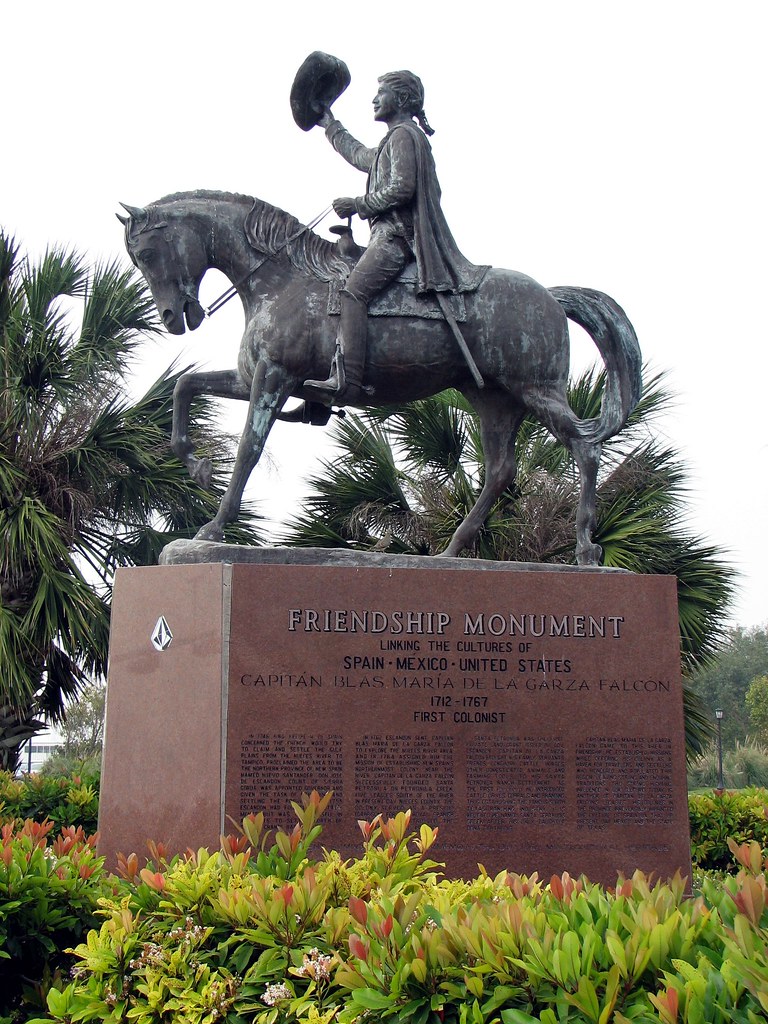Exploring my Hispanic Heritage at Cushing Library
By Sydnie Acker | 10-26-2021
Igniting my Curiosity
At the height of the COVID-19 lockdown in 2020, I decided that, like many other Americans at this time, I really needed a new activity. I discovered the local Carnegie History Center in Bryan, Texas, and its many online resources, including a free subscription to Ancestry.com. I created an account and immediately became captivated by the vast world of genealogy. Finding out more about my genealogy became addicting, and I loved how it felt like I was piecing together a puzzle or solving a case, like a detective. This newly discovered passion for genealogy led me to apply for a job at the Cushing Memorial Library and Archives.
Family Folklore Turned Reality
As a young child, my grandfather always said that we were descendants of a man who played a large part in the formation and development of South Texas, but I never fully believed him. It wasn’t until I searched the Texas A&M Libraries online catalog (LibCat) for my mother’s family name, Falcon, that I discovered Blas María de la Garza Falcón. The book Captain Blas María de la Garza Falcón: Colonizer of South Texas was my introduction into the rich history of the Falcón family. Written by Clotilde P. García, M.D., the book is located in the Cushing Memorial Library and Archives (Cushing Library/Chapman Texas Collection/Call Number: CS71.G247 1984).

Reproduced from the book Captain Blas María de la Garza Falcón: Colonizer of South Texas, by Clotilde P. Garcia (San Felipe Press, 1984).
Captain Blas María de la Garza Falcón
Blas María de la Garza Falcón (1712-1767) was born in Nuevo León, Mexico, to Beatriz de Villarreal and General Blas de la Garza Falcón, an early settler of Sabinas Hidalgo and Villaldama, Nuevo León, and two-time governor of Coahuila, Mexico. By 1734, Blas María de la Garza Falcón had become a captain, and, in 1747, he received his first exploration and settlement assignment. South Texas colonizer José de Escandón (born in Spain), the governor of the province Nuevo Santander, picked Garza Falcón to lead a group of men to explore and establish seven settlements along the south bank of the Rio Grande. Colonizing the south bank of the Rio Grande was important because it would give the Spanish advantages in colonizing other locations in South Texas, including having a Spanish-controlled location near previously isolated Spanish colonies.
In 1749, Garza Falcón arranged for 40 families to settle at the villa of Camargo, the first settlement on the Rio Grande, which he also founded. José de Escandón named him chief justice of the villa. As with any act of colonization, sadly, those who already lived in those areas were displaced: for example, the Mayapem, Saulapaguet, and Carrizo people. Escandón was also involved in settling land near the Nueces River: this area saw conflict between the Spanish and the Apache and Comanche Nations. After two failed attempts to settle near the Nueces River, Escandón involved Blas María de la Garza Falcón. The violent consequences of colonization are another avenue of research, which I would like to conduct at the Cushing Memorial Library and Archives, and elsewhere.
The land surrounding the Nueces River was rather inhospitable, with extreme weather conditions and an abundance of wildlife; yet, in 1762, the agricultural superpower Santa Petronila Ranch was born. Santa Petronila Ranch was the first Spanish settlement in current-day Nueces County, Texas, and its creation established the first farming/ranching industry in the county. This is where Captain de la Garza Falcón was said to have brought the first longhorn cattle to Texas. Santa Petronila was created to be a way station for travelers and eventually became the most extensive cattle and horse ranch in the northern hemisphere.

Reproduced from the book Captain Blas María de la Garza Falcón: Colonizer of South Texas, by Clotilde P. Garcia (San Felipe Press, 1984).
His Legacy
The legacy of Blas María de la Garza Falcón still lives on in Texas today. His statue is featured as part of the Friendship Monument in Corpus Christi, erected in 1992 to acknowledge the connections among the United States, Spain, and Mexico. The statue portrays Captain de la Garza Falcón on a Spanish mustang, raising his hat to greet everyone in the area. In addition to this monument, the Falcon name can be seen in many places, including Falcon Dam, Falcon Reservoir, and even the city of Falcon, Texas.

Photo by Karen, “Friendship Monument Corpus Christi,” reproduced from Flickr, 29 March 2008, Flickr. Accessed 11 October 2021.
Learning about the life of my ancestor, Blas María de la Garza Falcón, has been one of the most captivating and exciting experiences of my life. It was amazing to have the opportunity to learn more about him at the Cushing Memorial Library and Archives, and even better to have a more complete picture of my Hispanic ancestry.
National Hispanic Heritage Month 2021 just ended, but we continue to explore our history!
Tags: Apache; Blas María de la Garza Falcón; Carnegie History Center; Carrizo; Colonization; Comanche; Cushing Memorial Library and Archives; Farming; Genealogy; National Hispanic Heritage Month; José de Escandón; Mes Nacional de la Herencia Hispana; Mayapem; Mexico; Nueces County, Texas; Nueces River; Ranching; Rio Grande; Saulapaguet; Texas History; Santa Petronila Ranch; Spain.
Cushing Memorial Library and Archives Collections: Floyd & Louise Chapman Texas & Borderlands Collection.
Contact Us: cushingcollective@library.tamu.edu
 |
Sydnie Acker is a Student Worker at Cushing Memorial Library and Archives and a Political Science student in the Texas A&M University Class of 2022. |